Insulin pumps offer a substantial increase in flexibility of dosing over injections.
Whilst insulin pumps use only one type of insulin, usually quick acting insulin , there are two different types of dose: basal and bolus.
Insulin pumps allow the user to set different basal rates at different times of day and provide a number of different bolus doses to cater for meals that are typically more slowly digested.
What is a basal dose?
The basal dose acts as a background dose of insulin, with the insulin pump providing a constant flow of insulin in the same way as the pancreas in a non-diabetic person does to keep blood glucose levels consistent during periods of fasting.
This steady dose of insulin is needed to counteract the steady of flow of glucose into the blood provided by the liver through the day.
Setting basal doses on your pump
Most pumps on the market allow you to set a number of different rates at which the insulin flows into your body. Most modern pumps will let you specify a basal rate for each hour of the day. This can be a great benefit as many of us will require a bit more or less background insulin at different parts of the day.
Setting basal doses can take a bit of time to get right. Your health team should be able to advise you on getting your basal dose set up so it gives you good control without risking hypos.
Your health team may start you off on a level that sees your levels trending higher than low initially, to be on the safe side, but then you can work with your health team to gradually tailor your dose to even out any initial high or low points through the day
Basal rates can be changed, temporarily or permanently, when desired and can even be switched off if necessary, say if you are exercising Basal doses may also need changing in response to changes in seasons and during illness, if blood glucose levels are trending higher.
Again, your health team can advise you on when or whether you may need to revise your basal dose.
What is a bolus dose?
The bolus is the dose of insulin that is specifically taken at meal times to help control blood glucose levels following a meal. A bolus dose is designed to mimic the release of insulin by the pancreas that occurs in people without diabetes.
Setting bolus doses on a pump
Insulin pumps make delivering bolus doses easier than is possible with injections as with insulin pumps, each bolus just takes a few button presses.
In addition, modern insulin pumps can also deliver a range of different bolus doses from standard boluses (similar to giving a single injection) through to advanced boluses which involve insulin being steadily delivered over a period of hours to cope with meals that are more slowly digested.
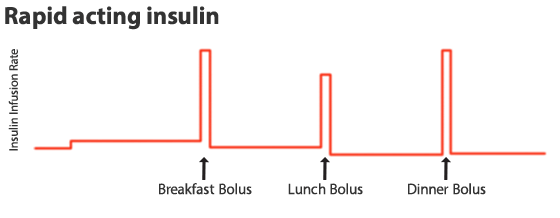
Standard / normal bolus
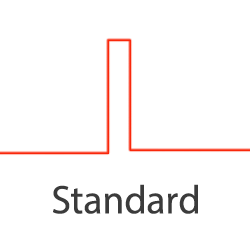
This bolus is the most similar to the bolus you would receive from an injection It is a single dose delivered over a short period of time, usually within a few minutes.
A standard bolus is useful to counteract sharp rises in blood glucose levels such as would be expected in response to carbohydrate based meals with relatively low amounts of fat
Advanced bolus doses
The advanced bolus doses detailed below offer the chance to tailor how bolus insulin is delivered. These doses can be useful for dealing with meals that cause blood glucose levels to rise a number of hours after eating.
Using these advanced bolus doses can be useful as it saves having to remember to bolus a set time after eating for these more slowly digested meals or having to react when blood glucose levels start going too high
Often it’s normal to start trying the more advanced doses once you’ve become confident with using your pump and have a good understanding of how different meals affect your sugar levels in different ways.
It’s best to start out cautiously when using these doses and have the support of your health team when you try these new functions. When testing a new bolus patter, take care not to risk having your sugar levels going too low as a result.
![Standard action]() Extended bolus / Square wave bolus
Extended bolus / Square wave bolus
Whereas a standard bolus is a single up front dose of insulin, an extended bolus is a dose of insulin that is delivered over a set period of time, typically varying from 15 or 30 minutes anywhere up to several hours if needed. With an extended bolus, the dose is consistently delivered at the same rate over that period.
An extended bolus can be useful if having low carb meals with a high fat or protein content, such as steak or cauliflower cheese
Combo bolus / dual wave / multi wave bolus
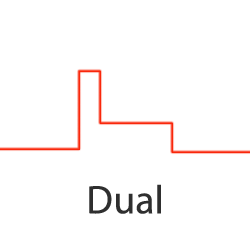 These terms describe a more complex way of delivering insulin whereby you get an initial bolus and then an extended bolus which follows the initial bolus.
These terms describe a more complex way of delivering insulin whereby you get an initial bolus and then an extended bolus which follows the initial bolus.
These bolus types may be useful for foods such as pizza and pasta which can typically cause an additional rise in blood glucose levels a number of hours after eating
Correction bolus
A correction bolus is not too dissimilar to a standard bolus except that it relies on the pump’s bolus calculator to work out how much active bolus insulin you currently have in your body and therefore how much insulin you need to correct a high blood glucose level.
Correction boluses can be useful as it can be a mathematical challenge to properly take into account the remaining effect of the insulin in your body.
The active insulin may be referred to as ‘insulin on board’ (IOB) or ‘bolus on board’ (BOB) by your pump.
Easy bolus / Audio bolus
An easy bolus isn’t any different to a standard bolus in terms of how the pump delivers it but it does allow the user to more efficiently dial up and submit the number of units to receive. In other words, it enables the pump wearer to dial up the number of units and deliver the dose with fewer button presses.
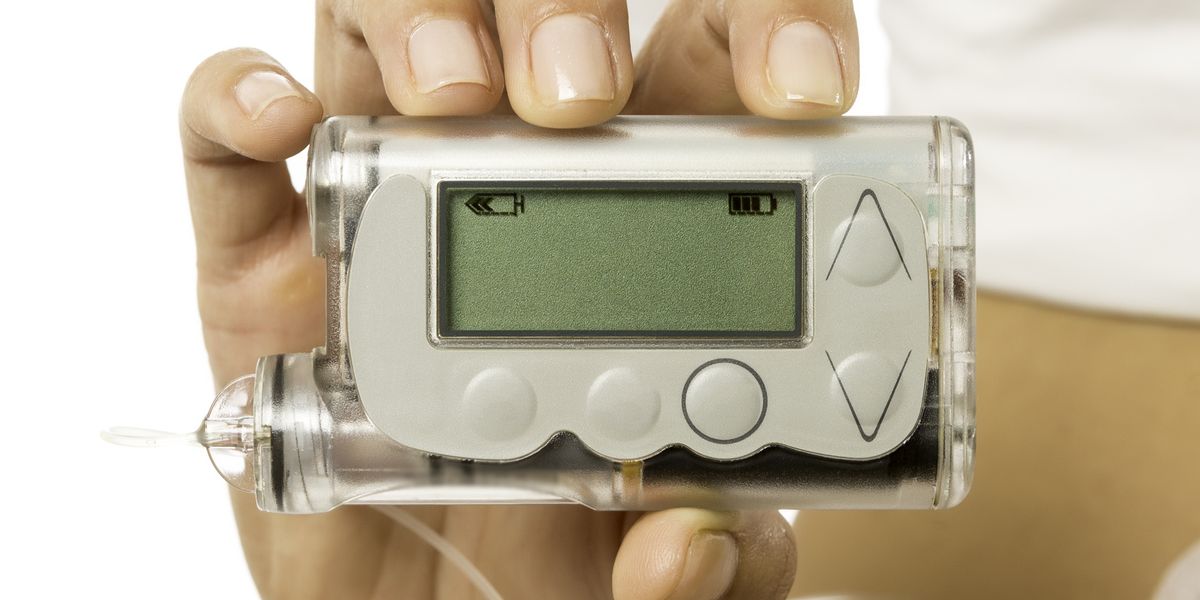
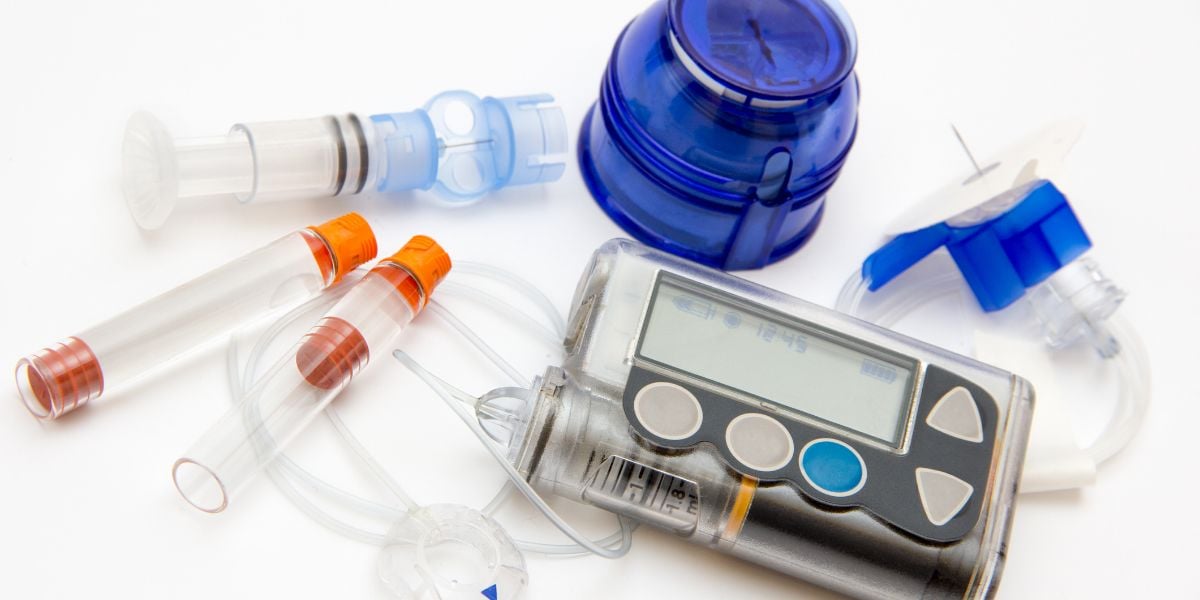
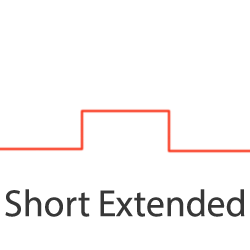 Extended bolus / Square wave bolus
Extended bolus / Square wave bolus 
